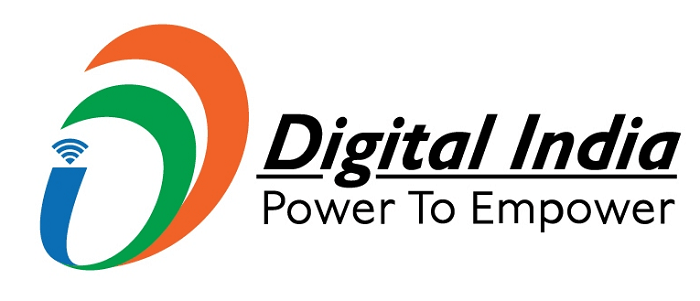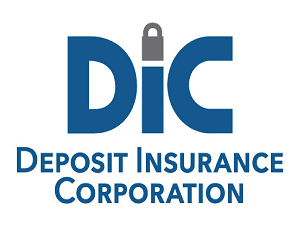What is the full form of DICDIC: District Industries CentreDIC stands for District Industries Centre. The District Industries Center (DIC) is a central government program that seeks to support local cottage and small-town industries. The District Industries Centers were created at the district level and offer all the assistance and services required to help business owners build MSMEs (Micro, Small and Medium enterprises). Since its launch in 1978, the DICs have been created in various Indian districts at various times. 
As the economy hit a plateau, it became apparent that industries should take precedence over agriculture. The necessity for businesses to flourish at a faster rate prompted the Centre to come up with the concept of district industry centres. To hasten the construction and development of businesses in the districts, the Center built District Industries Centers in numerous nationwide districts. Being a central sector program, it is entirely supported by the federal government, and the states are not compelled to contribute anything to its creation. The District Industries Centers facilitate the establishment of facilities for purchasing machinery, equipment, and financing and assist in developing acceptable plans for developing industrial clusters. The District Industries Centers General Manager is a Joint Director. General Manager conducts reviews that assist in assessing various schemes' effectiveness and resolving implementation issues. Role of District Industries Centres (DICs)In each state, the District Sectors Centers (DICs) are crucial in fostering the growth of various industries. The government department of commerce and industry establishes them. Sub-District Industries Centers (SDICs) have also been established in several states, including Nagaland, in addition to DICs. This extra layer has made it easier for industrial development to go farther into the nation's rural areas.
Schemes Under the District Industries Centres (DICs)Numerous initiatives under District Industries Centers' purview have been implemented. These programs aid in achieving the objectives of creating the District Industries Centers. These programs fall under the categories of both central sectors and centrally supported programs. The DIC covers the following programs: 1. Prime Minister's Employment Guarantee Program (PMEGP) Launched in 2008, this federally funded program is run by the Ministry of Micro, Small, and Medium Enterprises (MSME). The PMEGP strives to provide educated unemployed persons with work options in urban and rural locations. Khadi & Village Industries Commission is the nodal organization for carrying out the program (KVIC). Banks will lend 90-95 per cent of the total amount through this program, with the applicant paying 5-10% of the project's costs in the commercial, service, or industry sectors. 2. District Industries Centre (DIC) Loan Scheme The self-employed and small business sectors in cities and rural areas with a population under 1 lakh and a capital investment of less than Rs. 2 lakhs are eligible for this program. The Small-Scale Industries Board, village industries, handicrafts, weavers, silk & coir industries, and others identify these small units. The reserve money for general category entrepreneurs shall equal 20% of the total investment, or Rs. 40,000. (Whichever is lesser). 30% of the entire investment, or Rs. 60,000, must go toward margin money for SC/ST entrepreneurs (whichever is lesser). 3. Seed Money Scheme The self-employed who participate in skilled wage jobs or self-employment initiatives are the target audience for this program. Financial support for institutions in the form of lenient loans. The amount needed for a project to qualify for a loan under the seed money program has increased to Rs. 25 lakhs. Up to 15% of the project cost can be granted as seed money assistance for initiatives costing less than Rs. 10 lakhs. For SC/ST/OBC, assistance would be provided at 20% of the project cost, with a cap of Rs. 3.75 lakhs and 75% of the project cost coming from a bank loan. 4. District Awards Scheme The state governments have started presenting awards to such entrepreneurs at the district level to lift their spirits and recognize their accomplishments. The entrepreneurs that will get awards will be chosen by the District Advisory Committee, which is constituted at the district level. Vishwakarma Jayanti Day, which has a different date every year, is when the District Awards Function is held. At the award ceremony, the entrepreneur's items are shown for sale and exhibition, along with workshops and discussions about them. 5. Entrepreneurship Development Training Programme This program was established to provide training to educated unemployed individuals and motivate them to start their businesses or find skilled wage work. The following training programs are offered under the Entrepreneurship Development Training Program:
Eligibility Criteria for Applying Under the District Industries Centres (DICs)Under the numerous plans mentioned above, loans are available through the District Industries Centers (DICs). The District Industries Centers (DICs), which promote and carry out these programs, offer loans under various programs with various qualifying requirements. Aadhar Card, name and address of your business, bank account information, date of business inception, primary business activity, kind of business, number of workers (if any), business investment, and account number are the typical documents needed to obtain a District Industry Center certificate. District Industries Centres' Activities (DICs)The District Industries Centres (DICs), a project of the national government, strive to carry out numerous tasks. These consist of the following:
Functions of District Industries Centres (DICs)
The District Industries Centres (DICs) carry out several significant tasks for the improvement of a district and to place that district on India's industrial map. The following list includes some of the duties carried out by District Industries Centers (DICs): - 1. Preparation of the Industrial Profile of the District This aids in weighing the benefits and drawbacks of establishing various enterprises in the district in light of the local infrastructure, raw material supply, labour pool, and land availability. 2. Assist Entrepreneurs in Obtaining Licenses Several licenses, including those from the energy board, no-objection certificate, water supply board, etc., are needed to set up an industrial unit. The District Industries Centers (DICs) support these licenses, making it simpler for business owners to establish industrial units in the relevant district. 3. Acting as the Focal Point of Industrialization of the District The District Industries Centres (DICs) are the focal point to advance industrialization. The District Industries Centers (DICs) handle everything from issuing different approvals and permits to arranging financing and awarding prizes. 4. Opportunity Guidance for Entrepreneurs District Industries Centers (DICs) assist in highlighting numerous options to support business owners. Along with contributing to the district's industrialization, this creates job opportunities. More harm is done than missed opportunities because people don't know about them. 5. Identify Infrastructure Facilities Infrastructure facilities are a major priority for determining the potential that may be tapped from a given location for any area to thrive. The District Industries Centers identify facilities like electricity, roads, warehouses, banks, quality testing facilities, etc. (DICs). 6. Manpower Assessment Concerning Skilled and Semi-Skilled Labor District Industries Centers (DICs) assist in making the greatest use of its platform to find the most suitable workers for each market. By doing so, underemployment is prevented. 7. Prepare a Techno-Economic Feasibility Report To improve areas that require it, the District Industries Centres (DICs) develop a techno-economic feasibility assessment that evaluates the performance of an industrial good, process, or service. 8. Advise Entrepreneurs on Investments Made The District Industries Centers (DICs) advise business owners on the many investments they want to undertake. In this way, they offer to consult services that support business owners in making wiser investment decisions. Frequently Asked Questions1. What is DIC in MSME Registration? Ans. Entrepreneurs involved in producing goods and providing services should register with the District Industrial Center. The Micro, Small, and Medium Enterprises Act of 2006 governs the registration of district industrial centres. 2. Who is the head of the District Industries Centre? Ans. A Joint Director leads the District Industries Center. Joint Director is a Special Deputy Commissioner-level position (Revenue). The Deputy Director/Assistant Director, Industrial Promotion Officer, and Industrial Extension Officer at the taluk level support the Joint Director. 3. What is a DIC Certificate? Ans. The main Center for registration is DIC. Registration is optional and not required. In all States, there are two different methods of registration. An initial certificate of temporary registration is issued. Additionally, a permanent registration certificate is issued following the start of production. Other Full Forms of DIC1. Disseminated Intravascular CoagulationA Disseminated Intravascular Coagulation (DIC) disorder causes blood clots to form all over the body and obstructs small blood arteries. Symptoms may include chest pain, breathlessness, leg pain, difficulty speaking, or difficulty moving certain body parts. Bleeding may happen as platelets and clotting components are depleted. Examples of this include bleeding into the skin, blood in the stool, and blood in the urine. Organ failure is one possible complication. The underlying cause of DIC typically manifests as symptoms and indications, and DIC is identified through laboratory testing. DIC can start suddenly, like in endotoxic shock or an embolism of amniotic fluid, or it can start slowly and over time, like in malignancy. Multiple organ failure and extensive bleeding can result from DIC. 2. Digital India corporation
The Ministry of Electronics and Information Technology, the government of India, established the non-profit Digital India Corporation under Section 8 of the Companies Act 2013. The business was once known as "Media Lab Asia." Since September 8th, 2017, it has been known as "Digital India Corporation." The Digital India program's vision, objectives, and goals are realized under the leadership and guidance of the Digital India Corporation (DIC). It offers Ministries/Departments of the Center/States strategic support for advancing the mission of Digital India through e-Governance project capacity building, best practices promotion, supporting Public-Private Partnerships (PPP), and fostering innovation and technology in a variety of fields. 3. Deposit Insurance Corporation
The Trinidad and Tobago financial system remains stable thanks to the DIC. By the Central Bank and Financial Institutions (Non-Banking) (Amendment) Act of 1986, the Deposit Insurance Corporation (DIC) was created. Fund administration, insurance protection for qualified depositors against the potential loss of their deposits if a member institution closes, and acting as the member's liquidator are some of its duties.
Next TopicFull Form Lists
|
 For Videos Join Our Youtube Channel: Join Now
For Videos Join Our Youtube Channel: Join Now
Feedback
- Send your Feedback to [email protected]
Help Others, Please Share










